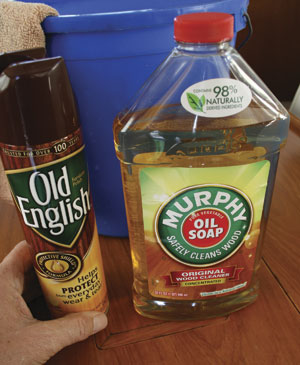
News Details
Maintenance Tips and Tricks Posted on October 12, 2015
So you want your boating to be even better from now on?
Read on, fellow boat nuts.
I’ll Take Two Cans, Barkeep
If you own a boat, most likely you’re going to come to a crossroads of sorts—either you’re going to have to ply your windows with a squeegee after every washdown or rain shower (yeah, right!), or sit sadly on the sidelines while mineral deposits slowly but surely build up over time, ultimately obscuring the view from your saloon, galley, or wherever. There’s a way to nix this deplorable situation in one fell swoop, however—Barkeeper’s Friend, a common household product that’s been around since (would you believe?) 1882. Just sprinkle a little of the rhubarb-energized powder from the can on a wet microfiber cloth and do a little polishing on the glass. Lime, calcium, and other mineral deposits will disappear. Poof! Don’t use the stuff on aluminum window frames, though. Barkeeper’s Friend is no friend to anodized aluminum.
Ah Yes, the Doodlebug
Whether you’ve got teak decks laid in the old-fashioned way (with screws and bungs) or via modern techniques (with bedding epoxy), you should periodically scrub them with nothing but a 3M Doodlebug, a nifty plastic gizmo with grippers for removable pads on the bottom and a multi-directional fitting on top that accepts a broom-type, screw-on handle. Because teak is comparably soft, even soft-bristle brushes will eventually scour out the grain and do damage. A Doodlebug, on the other hand, especially when used cross-grain and with the mildest removable pad (white, as opposed to blue or brown) will remove dirt and grime but leave the grain intact.
That Zesty Lemon Scent
One of the fastest, most impactful methods of freshening up a boat’s interior wood begins with a washdown of all surfaces with a sponge that’s been dunked in a bucket of warm water doused with fragrant (but slightly oily) Murphy Oil Soap, a tried-and-true product made especially for cleaning wood. The strength of the solution you use may vary slightly, but shoot for ¼ cup of soap to one gallon of water. Overdo it and you’ll turn your woodwork into a slippery mess. Once finished with the Murphy, we recommend topping off with a clean, dry microfiber cloth dampened with Old English Lemon Oil, whether from the bottle or the spray makes little difference. Both the Murphy and Old English products can be found in most supermarkets.
Log Out and Log In
The wonders of technology get more and more incredible every year. But there’s still something to be said for a good old pen and a pad—especially in an environment where computers, iPads, etc. can get exposed to slugs of saltwater. So keep some plain, old-fashioned writing materials onboard and use them routinely and regularly. Include an abbreviated record of important performance numbers like time to plane (if pertinent), speeds at various revs, and fuel-burn numbers, as well as, among other things, the dates of the most recent oil changes, fuel polishings, and engine-zinc changes. Update when necessary. Keep your record in the same convenient place all the time. Do this and you’ll know at a glance (and without having to energize a computer) exactly when critical chores and details need to be addressed. Who needs high-tech magic tricks anyway?!
Zip, Zip, Zip!
Need to replace some caulking in your teak deck? Yeah, you can use a dedicated reefing tool or a screwdriver with a sharpened, right-angle bend at the tip. But hey, why not go with something easier, faster, more thorough, and just a bit more technological? Try a palm-style router with a ¼-inch bit (or whatever size fits the width of your caulked seams) and a jig like the one shown below. You begin by simply lining the edge of the jig (white King Starboard) up with the edge of the seam you need to reef out and repair. Then, with a pocketknife or reefing tool, remove just enough old caulking to determine the depth of the cut you should make and adjust your router to reflect said depth. Then finally, after making a proper plunge cut with the bit, you simply slide the router’s base along the wooden batten (fastened to the Starboard with screws as shown) and the bit will remove the old caulk in one clean pass. Zip! We offer two caveats, though. First, the Starboard should be large enough so you can immobilize it with your knees as you kneel to work. Second, stick to the reefing tool for curved seams—it’s very easy to wreak havoc trying to free-hand a curved seam with a palm-type router.
Now This Is Too Simple
Here’s a boat-worthy tip from the one-time head electrician of a New York City skyscraper—if you need to be away from your boat for a long period of time, simply end-for-end the batteries in your onboard flashlight or flashlights to keep said batteries from slowly but inevitably losing charge. When you return, all you’ll have to do is realign the batteries correctly and your flashlight or flashlights will be fully powered up and good to go.
Source: http://www.powerandmotoryacht.com/maintenance/more-maintenance-tips-and-tricks